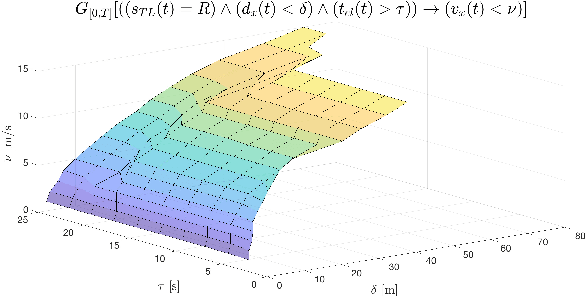Nauman Sohani
A Data-driven, Falsification-based Model of Human Driver Behavior
Dec 18, 2019



Abstract:We propose a novel framework to differentiate between vehicle trajectories originating from human and non-human drivers by constructing a data-driven boundary using parametric signal temporal logic (STL). Such construction allows us to evaluate the trajectories, detect rare-events, and reduce the uncertainty of driver behaviors when it assumes the form of a disturbance in control synthesis and evaluation problems. We train a classifier that separates admissible (i.e. human) examples - which arise from real-world demonstrations - and inadmissible (i.e. non-human) examples that are generated by falsifying specifications synthesized from the same real-world driving data. Proceeding in this fashion allows for finding a reasonable boundary of human behaviors exhibited in real-world driving records. The framework is demonstrated using a case study involving a human-driven vehicle approaching a signalized intersection.
 Add to Chrome
Add to Chrome Add to Firefox
Add to Firefox Add to Edge
Add to Edge